16 Best African Wildlife Safaris - Big Five Safari
Walk on the Wild Side: The Best African Safaris for Travelers
Explore the wild, untamed lands of Africa and befriend the mighty beasts who live free.
As children, many of us dreamt of exploring the continent of Africa on an ultimate safari. The word ‘safari’ means journey in Swahili. In Africa, the age-old saying that it’s all about the journey rings true. It is on the journey through the untamed heart of Africa that you will catch sights of the wilderness that the continent is known for. On the safari, you can spot lion cubs curiously wandering out of their mother’s protective gaze or a leopard feasting on a freshly caught zebra. See hundreds of wildebeest running across the vast African plains and the birds sitting on lazy hippos. Although the safaris have become more accessible and luxurious over the decades, the old romantic charm of exploring Africa remains.
But where to even begin when the untamed wilderness extends half a continent? The choice of location largely depends on the choice of wildlife you’d want to see. We suggest starting with the ‘Big Five’ including lions, leopards, buffaloes, elephants and rhinos. They are so named as they were considered the hunter’s greatest adversaries. Many parks across Central and Southern Africa are home to these animals along with other fascinating creatures such as giraffes, zebras, hornbills and chameleons.
Popular Safaris in AfricaThese safaris lead you to the untamed heart of Africa where you come face to face with wildlife including the big five. Being the most popular options, they are also easy to reach and often draw vast crowds.
1. Masai Mara, Kenya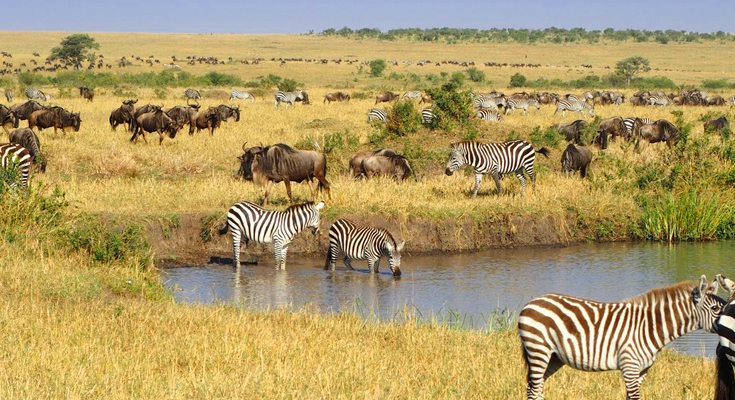
The picture that comes to mind when you think of the word safari is that of Masai Mara. It is the most famous safari in Africa. The Masai Mara National Reserve is a mixture of rolling hills, open grasslands and acacia woodlands that support a diverse array of wildlife. It is here that the vast herds of wildebeests and other grazing animals arrive between July and October. Known as the Great Migration, the congregation allures numerous predators to the fields of Masai Mara. Other animals you come across are elephants, giraffes and rare black rhinos. There are plenty of lodges in the Masai Mara if you wish to camp here. For those who crave the authentic wildlife experience, there are bush camps where you can spend the night under the stars in the backcountry's midst.
2. Serengeti National Park, Tanzania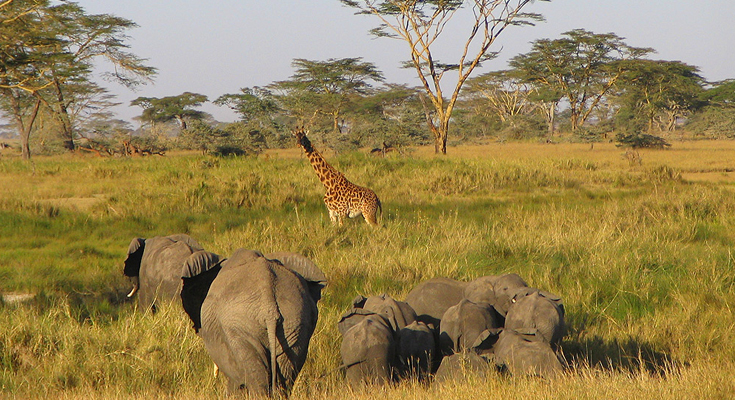
Located just south of the Masai Mara, the Serengeti National Park shares all the characteristics of its northern counterpart, from huge migrations to predators lurking in the bushes. Except, this national park is about ten times bigger than the Masai Mara, with a greater variety of habitats and ecosystems. With more open spaces, crowds are also thinner, as most tourists prefer visiting the Kenyan savannah.
3. Ngorongoro Conservation Area, Tanzania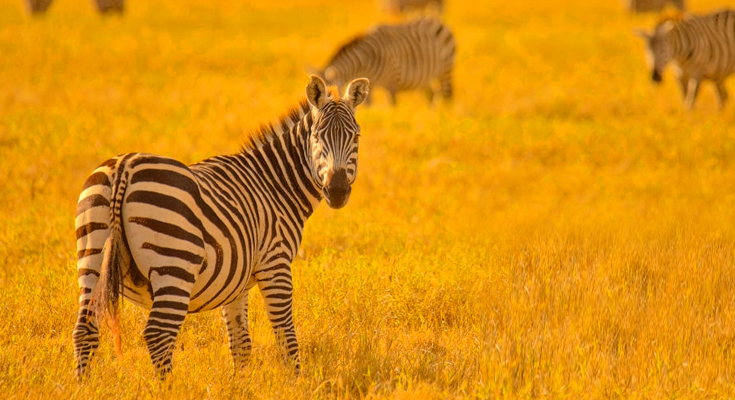
East of the Serengeti, lies the Ngorongoro Conservation Area, an UNESCO World Heritage site. Ngorongoro means ‘gift of life’ in the Masaai dialect. The park covers 8292 sq kms and features a volcanic lake, a gorge and savannah plains and woodlands. More than 25,000 animals including large four of the big five, large mammals and endangered species such as black rhinos, golden cats and wild hunting dogs flourish here. It is home to the densest population of Masai lions in Africa. The area also supports the Great Migration, as the fields around Ngorongoro Crater are perfect for wildebeest calving. Here, in the Eden of Africa you can see baby wildebeests being born and a number of predators lurking around waiting for an opportunity to strike.
4. Kruger National Park, South Africa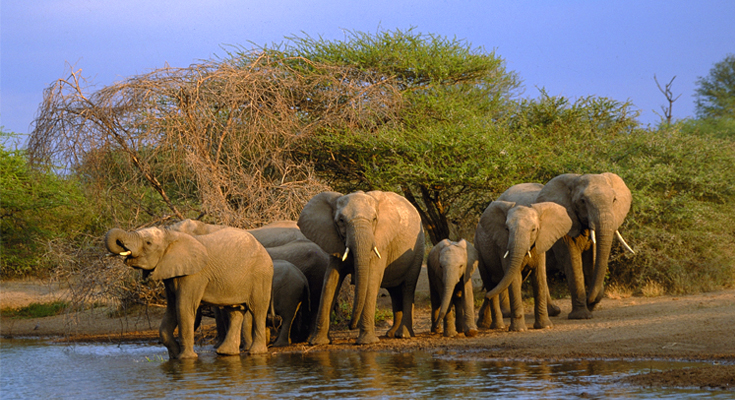
On the northeastern edge of South Africa lies the sprawling 22,000 sq km Kruger National Park. A natural mosaic of hills, savannah, woodlands and riverine forests; a plethora of wildlife including the big five along with cheetahs, wild dogs and large herbivores thrive here. An abundance of water from perennial rivers ensures blooming ecosystems all year round. The roads have been developed to sustain traffic during all seasons, making it suitable for expeditions during the rains. You are spoilt for choice in terms of accommodation with exclusive lodges, large public camps and smaller bush camps to choose from. From big five spotting expeditions to night drives along the wild trails, Kruger National Park is an adventure you cannot miss.
5. Etosha National Park, Namibia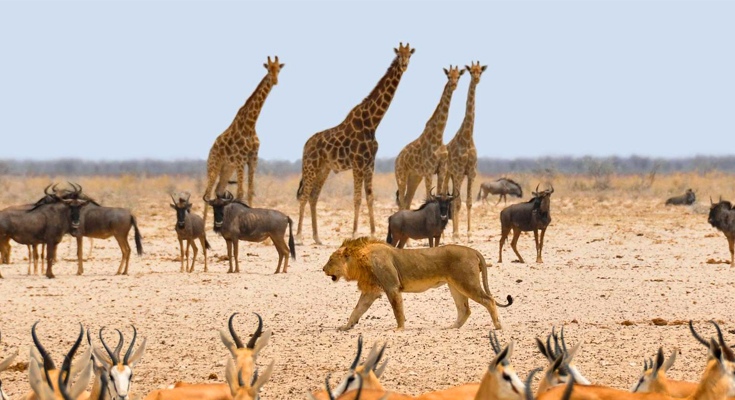
Etosha National Park is a harsh, semi-arid area in the Namibian grasslands. There are no rivers in the area and animals like hippos and crocodiles cannot be found here. Other animals are drawn to the many spring-fed water holes scattered throughout the Namibian countryside. In the dry season, these water holes are filled with animals such as zebras, oxen, giraffes and elephants, jostling for space. Predators such as lions and cheetahs often lurk menacingly behind bushes, hoping to catch a stray zebra or a baby elephant. There are public camps, set near the water holes and you can catch glimpses of wild animals quenching their thirst. The rainy season here is wet and large numbers of pink flamingos gather in the temporary lagoons.
6. South Luangwa National Park, Zambia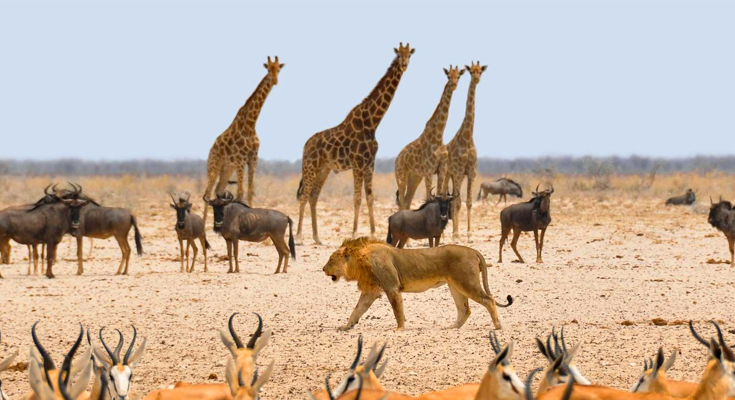
A destination for the serious wayfarer, the South Luangwa National Park is filled with expert guides and small owner-run lodges promising the all-round bush experience. The Luangwa River draws wild game in large numbers, and the lagoons are choked with hippos. You come across almost all the wild beasts that roam Africa, except cheetahs and rhinos. The South Luangwa is considered one of the best parks to catch glimpses of leopards. Follow the cats on their hunt during a night drive into the leopard territory, a thrill you can only experience here. You can also opt for guided walks into the bushes that provide a fascinating insight into the ecosystems that thrive there.
7. Arusha National Park, Tanzania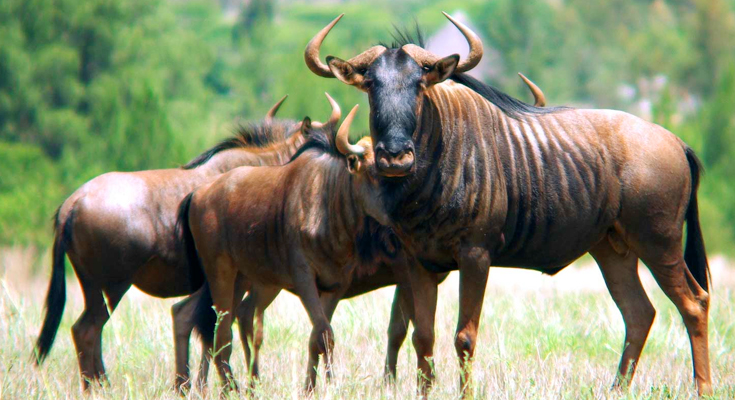
Tanzania's most accessible wildlife area, the Arusha National Park lies east of the Ngorongoro and south of Mount Kilimanjaro. With only 552 square kilometers, it is a small park with a lot of diversity. Home to the largest population of giraffes, this park also supports herbivores such as elephants, hippos, buffalos, zebras, antelopes and wildebeests. The topography is similar to that of the other parks in Tanzania and it is the perfect place to stretch your legs. There are both walking and canoe safaris that take you into the heart of Arusha, to the active volcano of Mount Meru. If you’re feeling adventurous, you can also go for climbing or hiking the active volcano which guarantees encounters with the resident animals.
8. Hwange National Park, Zimbabwe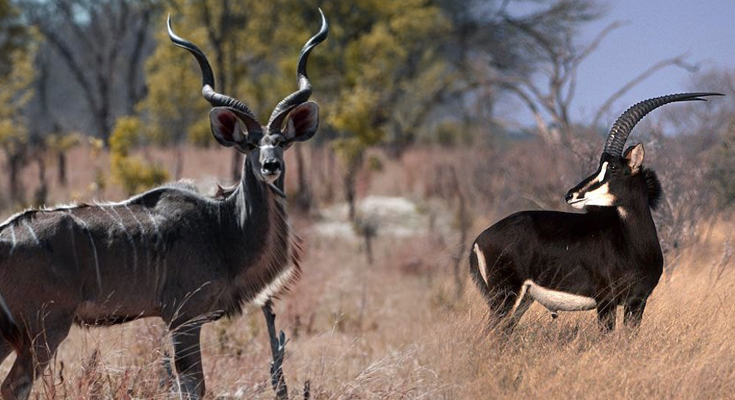
Located in western Zimbabwe, the country’s largest national park covers an area of over 14,000 square kilometres. Just two hours away from Victoria Falls, the park boasts of a diverse wildlife with more than 100 species of mammals and 400 species of birds. This park is also home to more than 40,000 majestic tusker elephants. The dry season is the best time to visit this park as the animals gather around the various waterholes. The wet season brings vivid vegetation that attracts migratory birds from the Northern Hemisphere, making it a prime destination for bird watching.
9. Nyungwe Forest National Park, Rwanda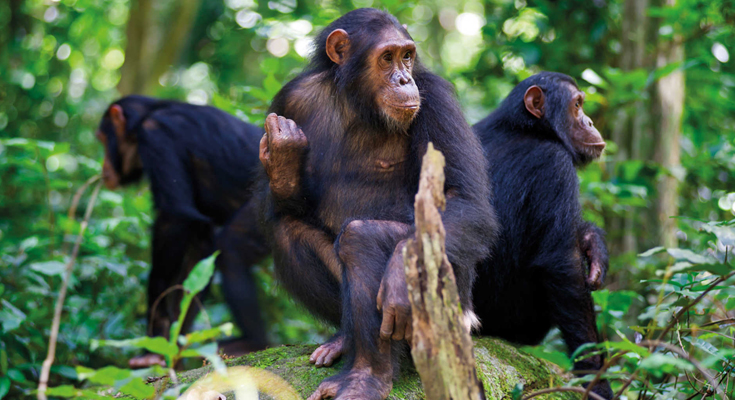
A vast area of mountainous rainforest, the Nyungwe National Park is home to over 85 species of mammals including 13 different species of primates and over 300 species of birds. Enriched by swamps, marshes and woodlands, there are a lot of activities on offer in this national park. Chimpanzee treks and gorilla treks are very common, where you track groups of chimpanzees and gorillas in their natural habitat. Trekking the Igishigishi Trail is an absolute treat as you come across more than 1000 species of plants and get a birds eye view of the entire forest from the Canopy Walk.
10. Moremi Game Reserve, Botswana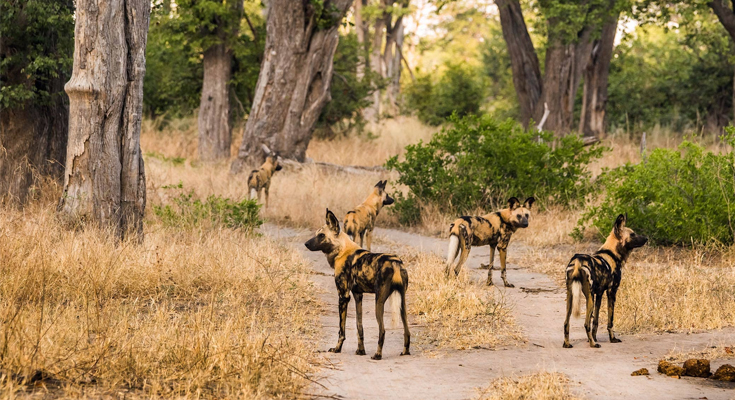
On the lush Okavango Delta, the Moremi Game Reserve is rich in wildlife such as lions, hyenas and a large variety of herbivores. The seasonal water bodies of the delta attract a plethora of animals from the mopane woodlands nearby. Predators such as wild dogs and cheetahs are found here in abundance. You can also opt for boat rides and get glimpses of the birds and animals that call the Delta their home. The legendary Victoria Falls in Zimbabwe are just a few hours away from the Okavango delta.
Safaris off the Beaten PathOther than the popular safaris, there are plenty of other parks and reserves to explore. Devoid of crowds, these safaris are for those who yearn for adventure and gain a better understanding of the wildlife.
1. Laikipia Plateau, Kenya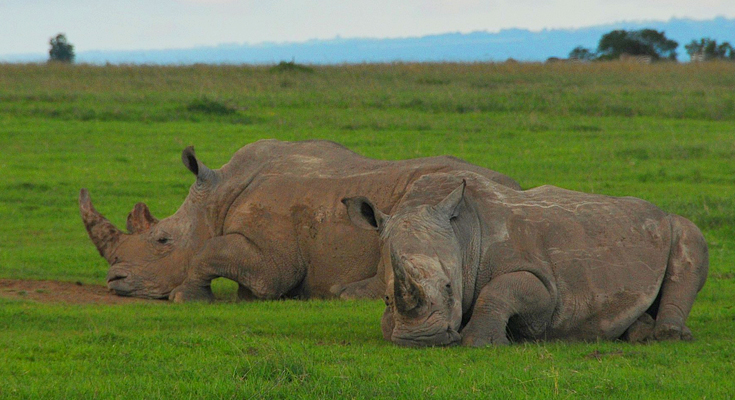
With rolling hills, snow-capped peaks and colonial-era ranches, Laikipia Plateau is the alternative to Masai Mara in Kenya. Comprising several private reserves that have joined forces in an enormous conservation effort, the high altitude area is a pioneer of eco-tourism. The reserves are home to Kenya’s biggest wildlife populations including elephants, buffalos, predators of all kinds, reticulated giraffes, black rhinos and over 500 species of birds. The community-run lodges offer activities such as camel treks and fishing. Due to the high altitude, the weather is considerably cooler than the Masai Mara, and the chance of malaria is non-existent.
2. Queen Elizabeth National Park, Uganda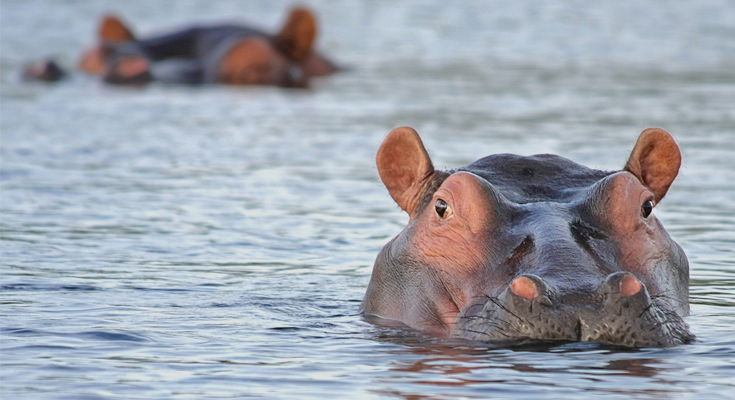
Uganda is best known for its gorilla treks. The Ugandan reserves are often overlooked due to the relentless poaching during the country’s turbulent years. But the wildlife has replenished itself at an astonishing speed. Elephants and giraffes roam the savannahs and hippos crowd the Kazinga Channel. Hordes of tree climbing lions, originally from the town of Ishasha thrive here. For a small park, there is a lot of diversity here. Uncover a variety of natural habitats including chimps and gorillas in forest gorges and rare showbills in papyrus swamps. You can go for walking safaris, boat cruises and night safaris in the backdrop of the mighty Rwenzori Mountains.
3. North Luangwa, Zambia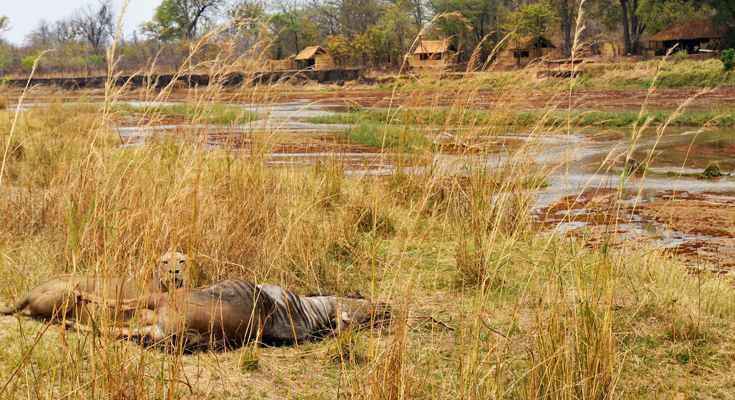
While Southern Luangwa is very popular among travellers, North Luangwa is remote, wilder and hardly crowded. It is here that you can have the ultimate wildlife experience of coming across a lion on foot. The animals in the area are shy and the sightings are far less reliable, due to the incessant poaching that occurred here for decades. The wildlife is also quite unfamiliar with human beings because of its remoteness. Predators are abundant in the area and are mostly drawn out by large herds of buffalos that live here. There are only three camps in the area and it can only be accessed by air. The activities are almost entirely on foot, with expert guides who can track hard to find predators and acute knowledge about the pristine environment.
4. Gorongosa National Park, Mozambique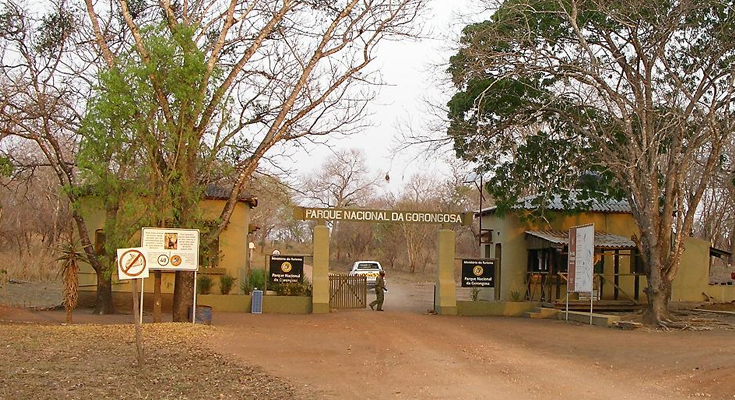
On the southern tip of Africa’s Great Rift Valley, the Gorongosa National Park covers an area of 4000 square kilometres. The rich floodplains of Lake Uremi in the center of the park supports diverse ecosystems such as savannah grasslands and montane forests. The park once supported one of the densest wildlife populations in Africa. A civil war in the late 1970s destroyed a significant portion of the wildlife. But as the animal populations bounce back, the Gorongosa Restoration Project has become one of the most successful conservation efforts in the world. With the land habitable once more, wildlife has returned both naturally and by constant conservation efforts. Herds of elephants, zebras, buffalos, African wild dogs and lions which once thrived here are slowly being reintroduced under the Gorongosa Restoration Project.
5. Central Kalahari Game Reserve, Botswana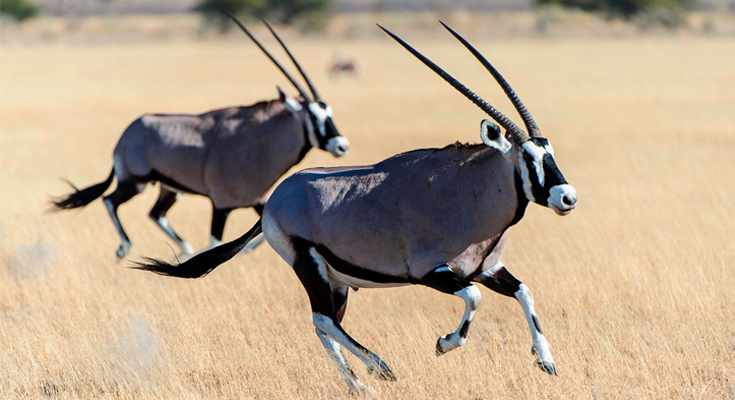
The sandy savannas and woodlands of the Kalahari form a harsh environment with rough terrains. Much of the wildlife that can be spotted here is highly nomadic, with few species such as elephants, hippos and buffalos being absent from the area. In the months between January and May, the rains bring fresh growth and hundreds of grazing animals arrive in the area. Predators such as cheetahs, hyenas and black-maned lions follow suit. Ostriches and meerkats can be found all year round. With 50,000 sq km, the Central Kalahari Game Reserve tops the biggest parks in Africa including the Serengeti National Park, Kruger National Park and the Okavango Delta Reserves. Until recently, entry to this reserve was restricted to mobile treks only. Now, two camps have started operations in this remote, unforgiving desert park. While sightings of wildlife are not entirely guaranteed, the sheer scale and isolation of the Kalahari Reserve is indeed awe-inspiring.
6. Northern Damaraland, Namibia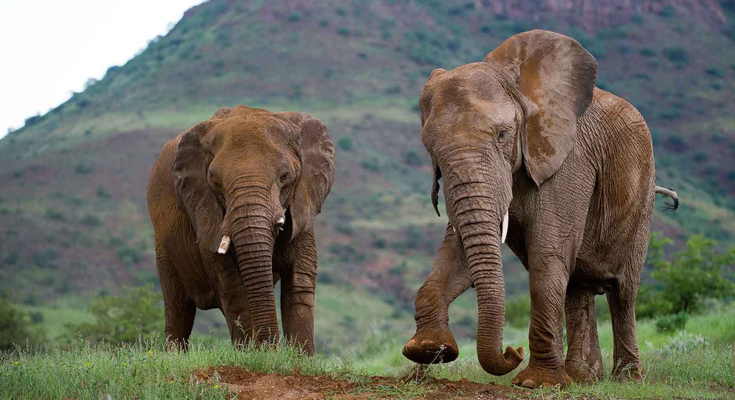
A land of striking geology, ancient rock arts and unique plant life, northern Damaraland falls outside any national park. Although predators are rare here, except for an occasional cheetah or a group of brown hyenas, there are plenty of animals that roam this land. There are vast populations of elephants, uniquely adapted for the desert. Rare black rhinos, mountain zebras, giraffes and oryx are also found here. A sequence of dry river valleys will take you deep into the rugged wilderness where several lodges offer safaris on foot or jeeps. Experience tracking rare black rhinos and camping out under the stars in the desert, surrounded by animals unperturbed by human presence.
Things to Remember While on Safari● The dry season is the best time to go for an African safari as most animals are drawn to water sources.● The rainy season also has its own allure, with gorgeous skies, baby mammals and more birdlife.● Dressing in comfortable clothes and shoes is important as you’d be out in the wilderness most of the time. Avoid dark colors as they attract flies and mosquitoes. There is a reason why khaki is the preferred color for safaris.● Binoculars are an essential part of the safari backpack. Views are often distant and the sheer number of bird species can turn anyone into an ardent birdwatcher.● The real risk during an African safari is the chance of contracting malaria. Carry mosquito repellents and malaria preventative antidotes at all times.● The risk from animals is negligible as long as you do as you're told. Do not ignore the advice of the guides, who have been trained to keep you safe.● Respect the local plant and wildlife and do not trash the fragile ecosystems surviving there.ConclusionThe world and its animals are precious, and that is exactly what you will take back with you from an African safari. From meeting wild animals face to face, traversing alien landscapes and sleeping under the stars, African safaris are an epic experience for those who are not afraid to travel the path less taken.
Recent Blog
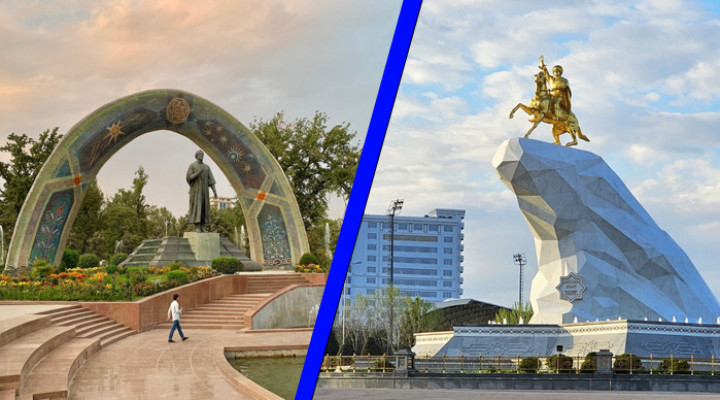
06 May
Travel ![]() Admin
Admin ![]() Coments (8)
Coments (8)
Central Asian Countries: What You Need to Know Before You Visit
Central Asia is a landlocked, culturally diverse, and historically rich region at the crossroads of...
Read More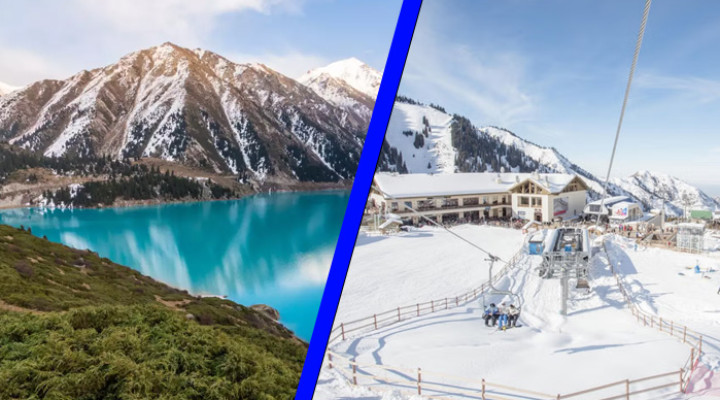
05 May
Travel ![]() Admin
Admin ![]() Coments (8)
Coments (8)
Summer in Almaty: Your Next Cool Escape from India’s Heat
Almaty is a perfect destination for Indian travelers for a summer getaway. Blessed with the fresh ai...
Read More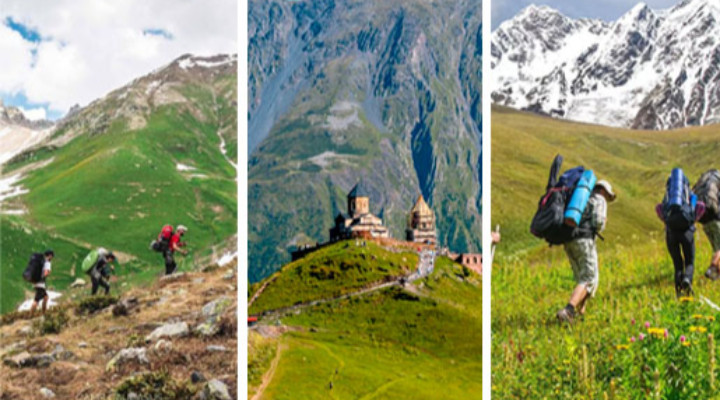
02 May
Travel ![]() Admin
Admin ![]() Coments (8)
Coments (8)
Pursue the Top Hiking Trails in Georgia for Heavenly Landscapes
Hiking in Georgia is as popular as the wine-making culture. Whether you want to climb lush green mou...
Read More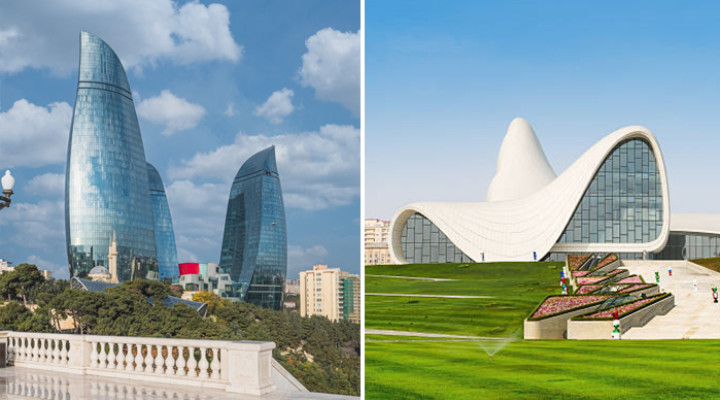
01 May
Travel ![]() Admin
Admin ![]() Coments (8)
Coments (8)
Baku Travel Itinerary: How to Spend 5 Days in Azerbaijan’s Capital
Are you planning a Baku trip? Here is a Baku travel itinerary for 5 days, which includes everything...
Read More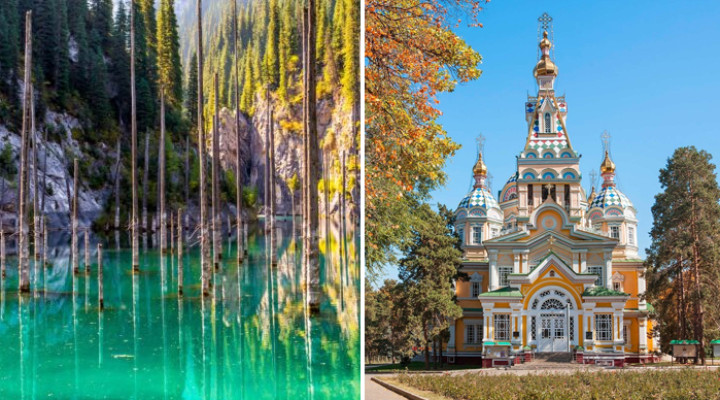
01 May
Travel ![]() Admin
Admin ![]() Coments (8)
Coments (8)
Almaty on a Budget: Luxury Holidays Without Breaking the Bank
Luxury holidays do not always mean breaking the bank. Some destinations offer you unlimited fun with...
Read More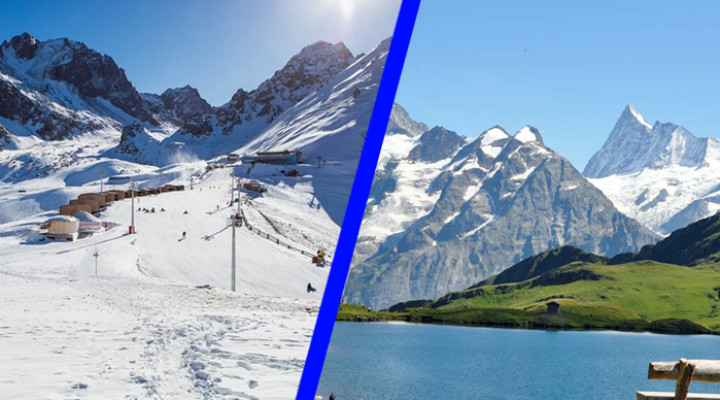
28 Apr
Travel ![]() Admin
Admin ![]() Coments (8)
Coments (8)
Kazakhstan vs. Switzerland: Mountain Beauty at Half the Price
For years, Switzerland has been known for its jaw-dropping mountainous beauty, perfected with postca...
Read More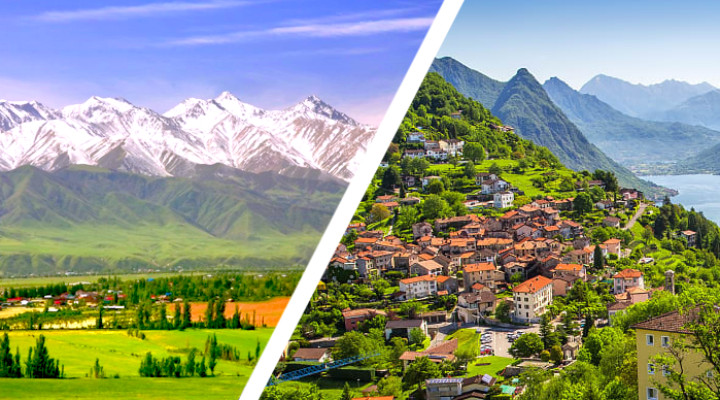
24 Apr
Travel ![]() Admin
Admin ![]() Coments (8)
Coments (8)
Central Asia vs. Europe: Which Offers Better Value for Indian Travelers?
Regarding traveling the world, two international regions that come to Indians more randomly are Euro...
Read More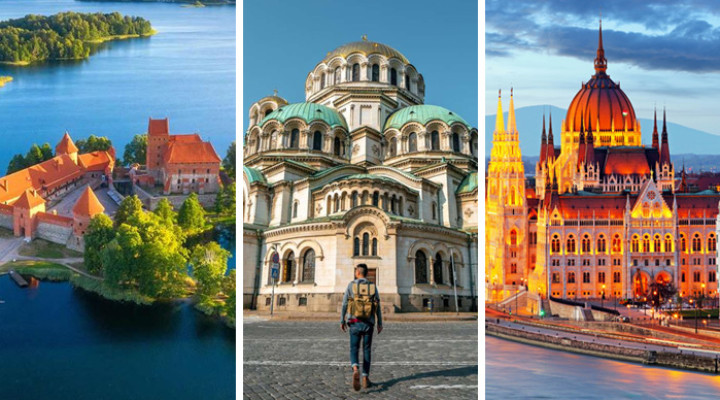
23 Apr
Travel ![]() Admin
Admin ![]() Coments (8)
Coments (8)
12 Best Places to Visit in Eastern Europe for an Unforgettable Experience
Eastern Europe is a treasure trove of a different culture, rich in history, fine architecture, and n...
Read More
22 Apr
Travel ![]() Admin
Admin ![]() Coments (8)
Coments (8)
Ananuri Fortress, Georgia: What to See, Do, and Eat
If you dream of having a day filled with amazing views of nature and enjoying Georgian regions, visi...
Read More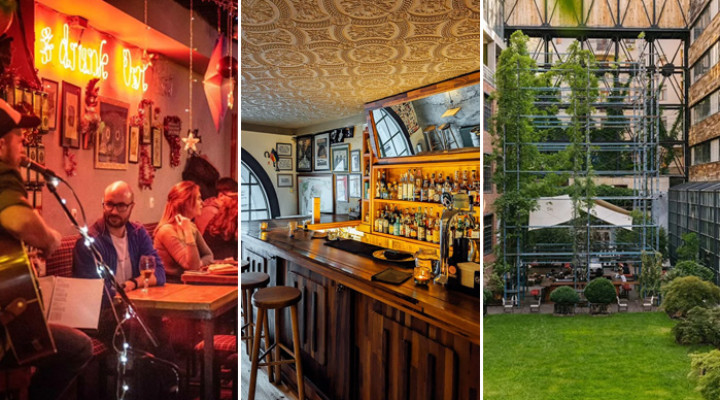
14 Apr
Travel ![]() Admin
Admin ![]() Coments (8)
Coments (8)
10 Best Cafes & Bars in Tbilisi
Georgia is one of the most attractive countries and has the most charming capital, Tbilisi. It is kn...
Read More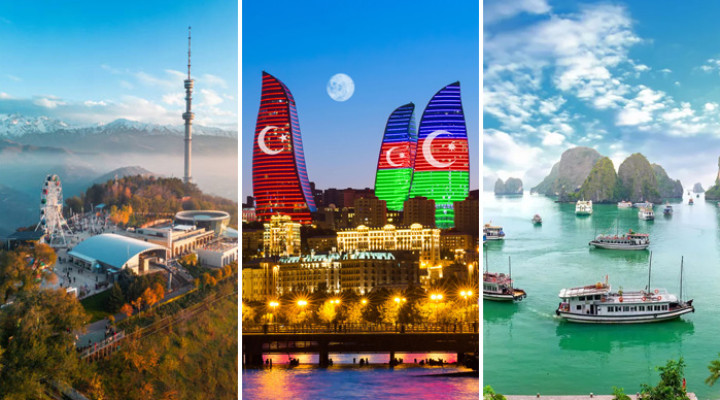
14 Apr
Travel ![]() Admin
Admin ![]() Coments (8)
Coments (8)
6 Trending Summer Destinations in the World
The Best Summer Destinations in the World offer something for every kind of traveler, and these are...
Read More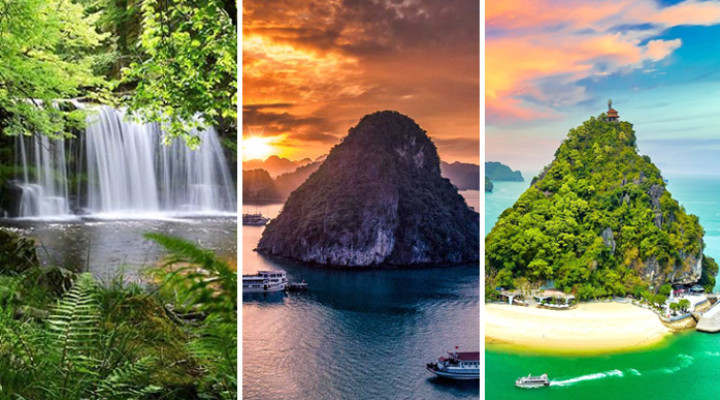
11 Apr
Travel ![]() Admin
Admin ![]() Coments (8)
Coments (8)
20 Top Things to Do in Phu Quoc Island - Vietnam’s Blissful Haven
Nestled away in the Gulf of Thailand, Phu Quoc Island is a dream getaway of golden beaches, lush jun...
Read More
02 Apr
Travel ![]() Admin
Admin ![]() Coments (8)
Coments (8)
Why Uzbekistan Should Be Your Top Budget Travel Destination in 2025?
Uzbekistan is a historical gem of Central Asia. It brims with medieval cities, cultural landmarks, a...
Read More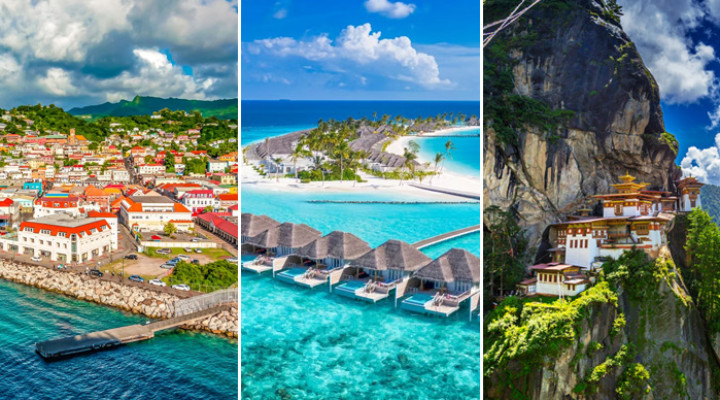
01 Apr
Travel ![]() Admin
Admin ![]() Coments (8)
Coments (8)
12 Visa-Free Countries for Indian Passport Holders: Explore the World Without Hassle
Traveling in new countries is always interesting, but one of the biggest obstacles to Indian travele...
Read More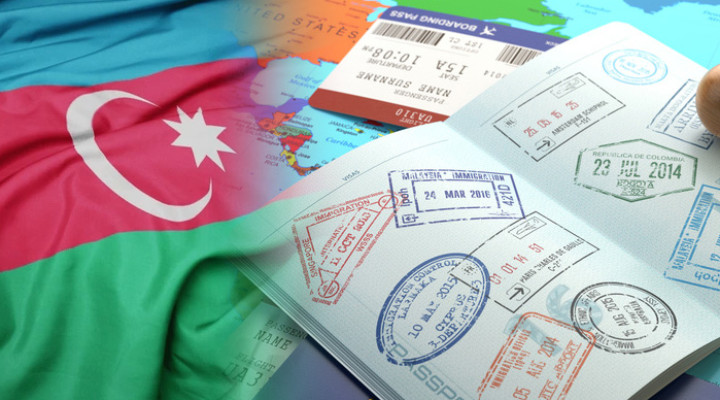
28 Mar
Travel ![]() Admin
Admin ![]() Coments (8)
Coments (8)
Baku & Azerbaijan Visa for Indians: Key Facts and Updates You Should Know
Baku, the capital of Azerbaijan, is one of the most vibrant cities to explore in Azerbaijan. The cit...
Read More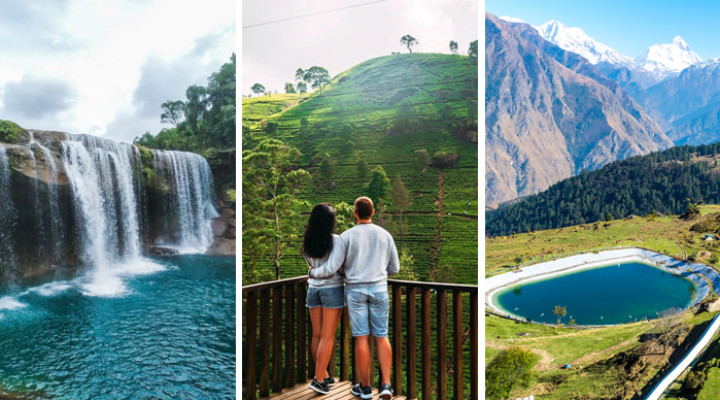
27 Mar
Travel ![]() Admin
Admin ![]() Coments (8)
Coments (8)
20 Best Places to Visit in Summer in India
As the summer season begins, India braces for an exciting summer break with multiple tourist destina...
Read More
26 Mar
Travel ![]() Admin
Admin ![]() Coments (8)
Coments (8)
Uzbekistan Travel Guide: Everything You Should Know Before Going
Are you planning a trip to Uzbekistan and want to know everything about it? Our comprehensive Uzbeki...
Read More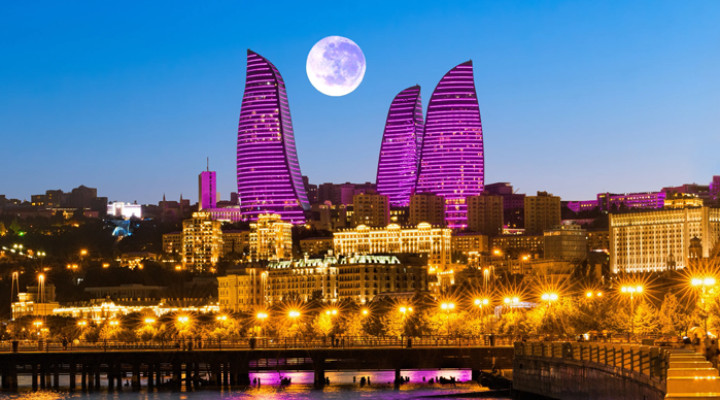
25 Mar
Travel ![]() Admin
Admin ![]() Coments (8)
Coments (8)
Why Baku is the Hot Destination for Indian Travelers
Baku, the treasure trove of Azerbaijan, is the hottest tourist destination for globetrotters. Partic...
Read More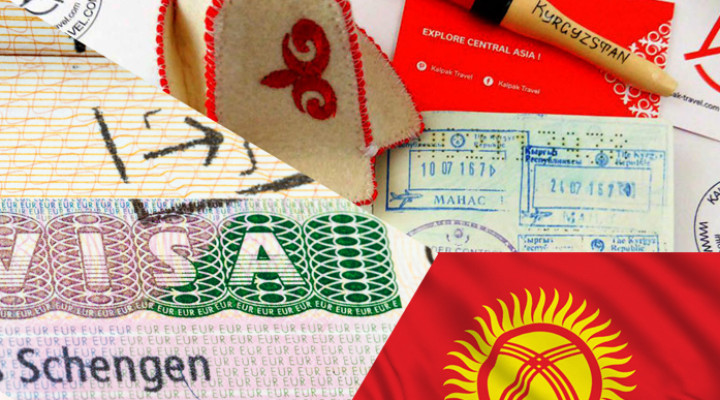
24 Mar
Travel ![]() Admin
Admin ![]() Coments (8)
Coments (8)
Schengen-style Central Asian Visa? Kyrgyzstan Plans Unified Visa for Central Asia
Isn’t a Central Asia visa a dream for many travelers who wish to explore the region’s untouched trea...
Read More
21 Mar
Travel ![]() Admin
Admin ![]() Coments (8)
Coments (8)
Kazakhstan Travel Guide: Insights for an Unforgettable Getaway
This travel guide can help travelers map out their vacation planning by jotting down the places they...
Read More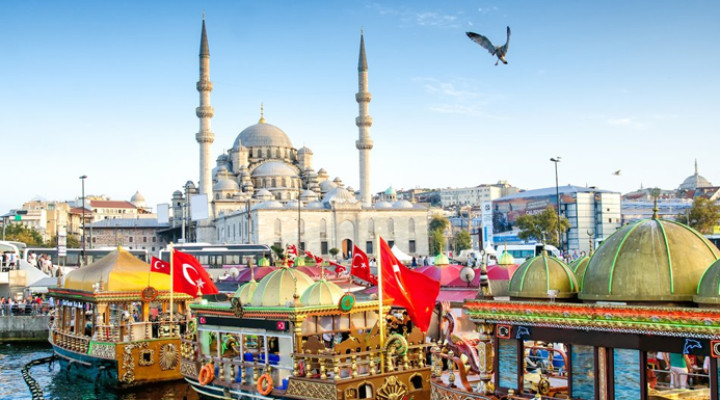
19 Mar
Travel ![]() Admin
Admin ![]() Coments (8)
Coments (8)
Best Time to Travel to Turkey for a Fantastic Getaway
Turkey has many untouched wonders and hidden gems to explore. Moreover, there are an array of advent...
Read More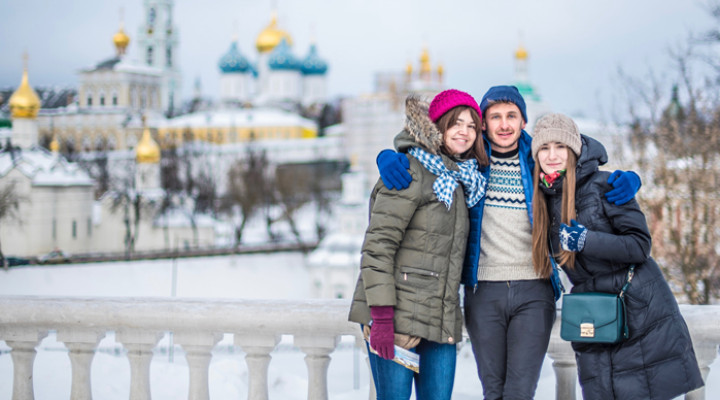
18 Mar
Travel ![]() Admin
Admin ![]() Coments (8)
Coments (8)
Best Time to Visit Russia to Experience the Magic of the Seasons
Every season has its unique charm and offerings that lure tourists from all over the world. Spring s...
Read More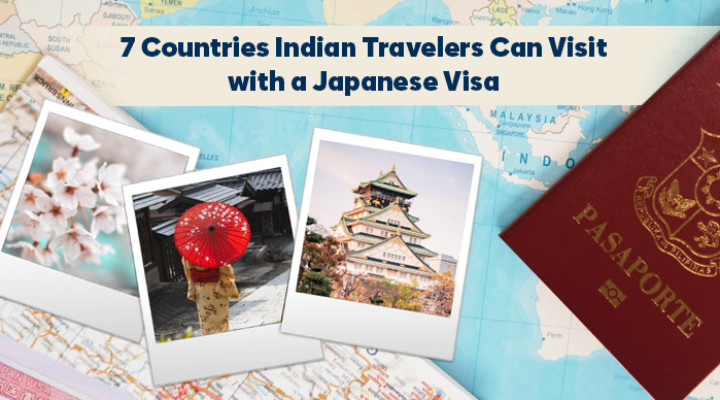
07 Mar
Travel ![]() Admin
Admin ![]() Coments (8)
Coments (8)
7 Countries Indian Travelers Can Visit with a Japan Visa
Indian citizens with a valid Japan visa can explore other destinations in the world without getting...
Read More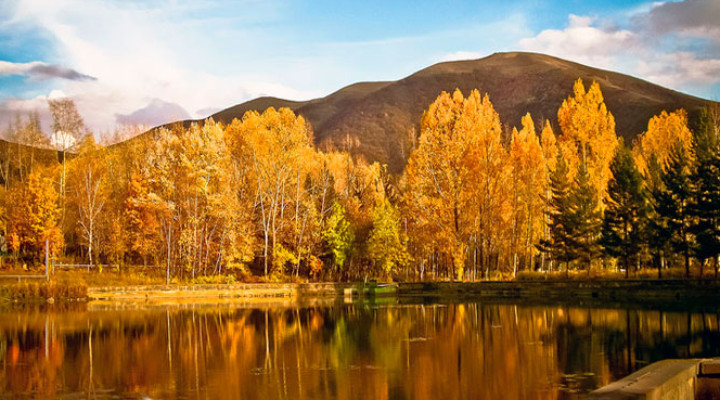
03 Mar
Travel ![]() Admin
Admin ![]() Coments (8)
Coments (8)
Best Time to Visit Armenia for an Unforgettable Experience
Armenia is a must-visit destination, with ancient monasteries, snow-covered Caucasus mountain peaks,...
Read More
28 Feb
Travel ![]() Admin
Admin ![]() Coments (8)
Coments (8)
14 Cheapest European Countries to Visit This Year
If you are wondering to know the least expensive countries to go to from India. From the seaside vie...
Read More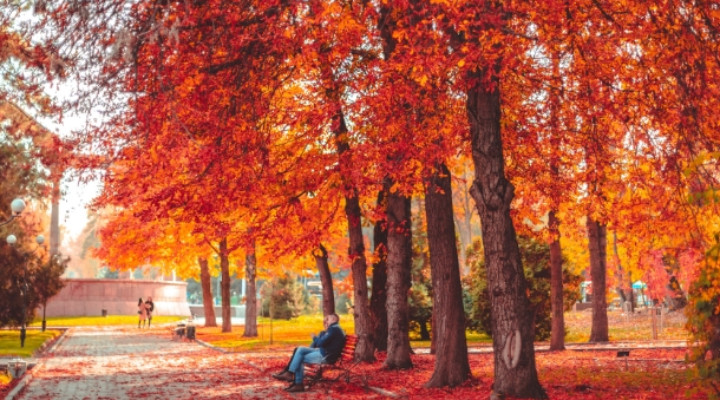
26 Feb
Travel ![]() Admin
Admin ![]() Coments (8)
Coments (8)
Best Time to Visit Kyrgyzstan for the Ultimate Adventure
Kyrgyzstan is an unmatched destination that you must visit. Before heading here, you should check ou...
Read More
25 Feb
Travel ![]() Admin
Admin ![]() Coments (8)
Coments (8)
15 Top Places to Visit in Da Nang Vietnam
Da Nang is a scenic coastal city in Vietnam with spectacular beaches, Buddhist pagodas, deep-rooted...
Read More
20 Feb
Travel ![]() Admin
Admin ![]() Coments (8)
Coments (8)
Visa on Arrival Countries for Indian Travelers
Indian travelers' dream of traveling to foreign countries can come true with a visa-on-arrival facil...
Read More
18 Feb
Travel ![]() Admin
Admin ![]() Coments (8)
Coments (8)
Big Almaty Lake: A Treasure Trove of Kazakhstan
You may have traveled to various astonishing places worldwide, but we bet you have not seen a gem li...
Read MoreBook With Confidence
![]() Hassle-free booking and best price guaranteed
Hassle-free booking and best price guaranteed
![]() 24/7 support available
24/7 support available
![]() Hand-picked tours & activities
Hand-picked tours & activities
![]() Free travel insurance
Free travel insurance

